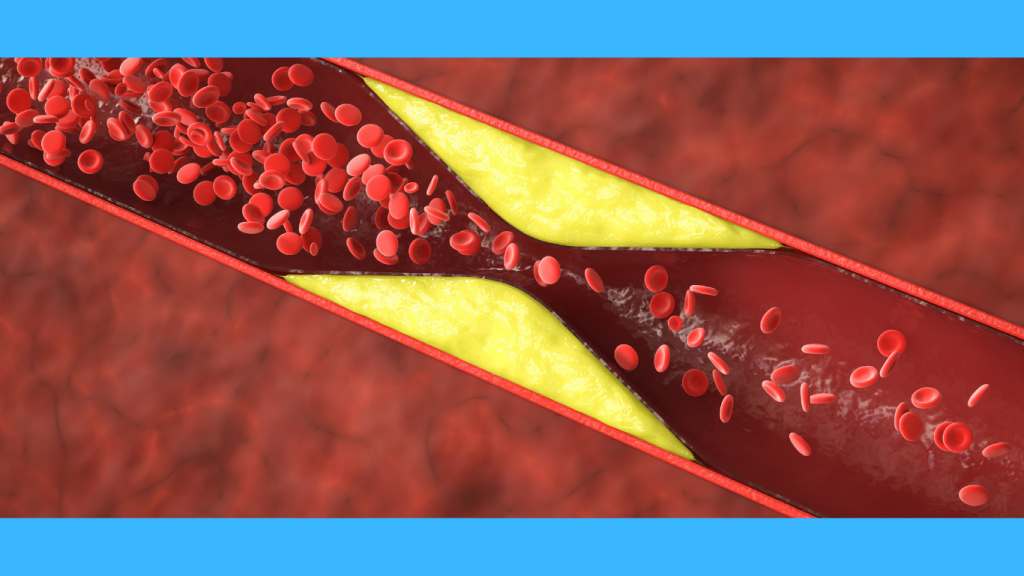
Category: Heart & Circulatory Health
Date: November 8, 2025
Published by: Yarima.org Editorial Health Team
Reading time: ~3 minutes
🚨 What Is Plaque Buildup?
Plaque buildup, also called atherosclerosis, happens when fat, cholesterol, calcium, and other substances collect inside your arteries — the blood vessels that carry oxygen-rich blood throughout your body.
Over time, these deposits harden and narrow the arteries, reducing blood flow and increasing the risk of:
- Heart attack
- Stroke
- Peripheral artery disease
Think of plaque as “rust” inside your body’s pipelines. The more it builds up, the harder it becomes for your blood to flow freely.
🧬 How Plaque Forms
Plaque doesn’t appear overnight. It begins quietly when the inner lining of your arteries (the endothelium) becomes damaged — often due to:
- High blood pressure
- Smoking
- High levels of LDL (“bad”) cholesterol
- Diabetes
- Inflammation and oxidative stress
Once the wall is damaged, LDL cholesterol sneaks in, gets oxidized, and triggers inflammation. White blood cells try to “clean it up,” but instead form fatty streaks that slowly turn into hard plaque.
💥 Why It’s Dangerous
Plaque buildup restricts blood flow, forcing the heart to work harder. If a plaque ruptures, a blood clot can form and completely block an artery — causing a heart attack or stroke.
Even before that happens, chronic narrowing of the arteries can cause chest pain (angina), fatigue, and poor circulation.
🧽 Can You “Clean” Plaque Naturally?
While you can’t literally scrub plaque out of arteries like a pipe, you can stop its growth — and even help stabilize or reduce it. Here’s how:
1. 🥗 Eat to Heal Your Arteries
- Focus on fruits, vegetables, and whole grains — they reduce oxidative stress.
- Choose healthy fats from olive oil, avocados, nuts, and fish.
- Limit saturated fats (red meat, butter) and avoid trans fats completely.
- Add fiber-rich foods like oats, beans, and chia seeds — they lower LDL cholesterol.
2. 🚶 Move Every Day
Exercise boosts circulation, strengthens your heart, and helps raise HDL (“good”) cholesterol, which helps clear LDL from arteries.
➡️ Aim for at least 150 minutes of moderate activity per week (brisk walking, cycling, swimming).
3. 🚭 Quit Smoking
Smoking damages artery walls and accelerates plaque formation. Stopping is one of the most powerful ways to protect your arteries.
4. 🩸 Control Blood Pressure, Blood Sugar, and Weight
These three factors fuel plaque growth. Regular checkups and early management keep your arteries flexible and healthy.
5. 💊 Consider Medical Treatments (When Needed)
When lifestyle changes aren’t enough, doctors may prescribe:
- Statins to lower cholesterol
- Blood pressure medications
- Aspirin or other antiplatelet drugs to reduce clot risk
- In advanced cases, angioplasty or stenting may be needed to restore blood flow
🌿 Bonus: Nutrients That Support Arterial Health
Research suggests certain nutrients may support healthier arteries:
- Omega-3 fatty acids – reduce inflammation and triglycerides
- Vitamin K2 – helps prevent calcium deposits in arteries
- CoQ10 – supports energy in heart cells
- Antioxidants (from berries, green tea, or dark leafy greens) – reduce oxidative stress
(Always talk to your healthcare provider before taking supplements.)
❤️ Key Takeaway
Plaque buildup is slow, silent, and dangerous — but also preventable.
By improving your diet, exercising, and managing risk factors, you can protect and even help reverse early artery damage.
Small changes today can prevent life-threatening events tomorrow.
Reference:
World Health Organization (WHO). (2023). Cardiovascular diseases (CVDs): Causes, prevention and control. Link